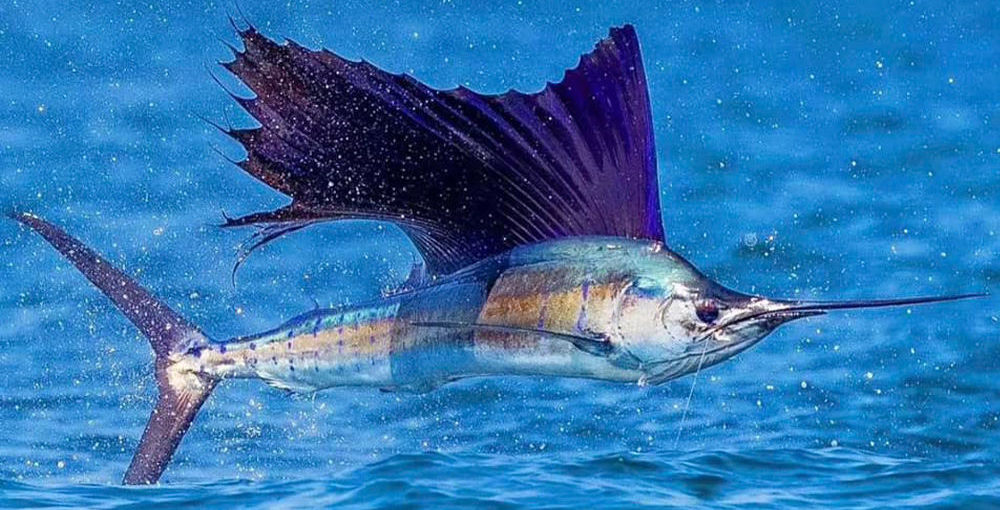
By Todd Staley
Communications Director FECOP and IGFA Award Winner
INCOPESCA (the Fishery governing entity in Costa Rica) demonstrated once again their disdain for the sport fishing / tourist sector.
The sport fishing /tourist fishing sector is one-third the size of commercial fleets but contributes 75% of all monies collected for License fees by INCOPESCA but has never been treated fairly when it comes to species of sport fishing interest.
Especially now when there is a proposed bill in congress to prohibit the sale of sailfish in Costa Rica. One of the oppositions points is they claim already regulations are in place to govern the exploitation of sailfish. These regulations are neither respected by fisherman nor enforced by authorities. A list of some of the “regulations” put in place to control sailfish and why they don’t work can be found in a previous article at Costa Rica’s New Sailfish Ruling, Conservation or Smoke and Mirrors? : (ticotimes.net) If you haven’t read this before please read it now.
The longliners claim sailfish is only 4% of their total catch and they do not target sailfish and they are only incidental catches when fishing for other species. Up to 10% of their catch is allowed to be sold on the National Market. This was recently lowered from 15% to make it appear that an effort is being made to reduce sailfish landed in local ports.
It is roughly a 6% increase of what they report their present annual sailfish catch is. Presently 16,000 to 19,000 sailfish are killed annually, but the increase will bring the total of legally permitted sailfish landings allowed to approximately 50,000 of our vital natural resource per year.
The reason sailfish need to be protected by law is because a regulation can live or die by the stroke of a pen. INCOPESCA’s recent decision is a perfect example. Using live bait on longlines within 30 miles of the coast was considered directly targeting sailfish for the longline fleet. Bait fishing inside the Gulfs of Papagayo, Nicoya, and Golfo Dulce was prohibited for the longline fleet as well.
The longliners leave their lines of hundreds of baited hooks in the water unattended while the go inside the gulfs to look for more bait. Only a dozen or so would sneak in at night and illegally fish for bait.
Now tourists leaving the gulfs to fish offshore will pass an armada of longline vessels parked in the gulf while they head out to catch and release sailfish. Then they will begin to pass unattended surface lines with jumping sailfish hooked to them that are required to be released but usually die by the time the longliner returns. Dead fish are allowed to be sold on the National market.
If one can profit from them, they die, whether from being hooked on a line for too long or by a fisherman’s club. Captains, imagine taking a charter out to the Furuno, and it difficult to fish because it is covered up by a spider web of longlines live baiting in the area.
When the Coast Guard finally had resources to enforce and arrest several boats, the answer from INCOPESCA was to suspend the regulation. Besides opening the gulfs to legal bait fishing by longliners INCOPESCA took it one step further. The regulation stated the using live bait on longlines inside 30 miles from the coast was considered targeting sailfish.
So, they suspended that regulation also! They used the wording suspended until further studies but made the decision to suspend without any scientific evidence and no time frame for they studies to be completed. This will have a devastating effect on sailfish especially on the Southern Costa Rica and Guanacaste sailfish populations.
Longliners claim that sailfish are migratory which is why they don’t need protection, but so is everything else they fish for. Also, Costa Rica is the only country in their migratory range of Mexico to Ecuador without some type of protection. More of a reason to protect them rather than to exploit them.
This all started over 10 years ago when the longliners met with the sport fishermen about sailfish. The longliners said if they had access to the tuna the foreign purse sein boats were taking, they wouldn’t even be interested in sailfish. The tuna fleet was moved offshore first to 45 miles and later by law to 80 miles. Now there are tuna everywhere but the longliners do not want to give up sailfish now without a fight.
There is a giant domino effect. Sport fishing is an annual $500 million dollar industry but only a part of that goes directly to the act of fishing. A large part is hotels, in country transportation, food, souvenirs and nature tours as more and more families come here to fish but stay longer to enjoy the other things that Costa Rica has to offer.
The suspension of these regulations is exactly why sailfish need protection by law. The suspension of bait ruling is one tough example. Don’t cry later. By allowing the sport fishing sector to be split by politics is not helping us, and it is not just fishermen, it is the whole tourist industry and 33,000 Costa Rican jobs sportfishing related tourism gives that will be affected.





















